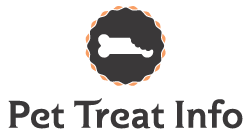Have you ever stood in the pet food aisle of your local big box store and wondered which foods were right for your furry friends? You check each label carefully and look for keywords like “nutritionally complete” or “organic.” If those labels have helped you, thank the Association of American Feed Control Officials (AAFCO).
AAFCO plays a significant role in deciding what goes into food for animals in the United States. However, few pet owners know what this agency is and what it does. Below are some key things you need to know about this organization.
What Is AAFCO?
AAFCO is a private, non-profit regulatory corporation that oversees pet food labeling in the United States and Canada. It is not a government agency and does not have law enforcement authority.
What It Does
Since 1906, this organization has worked with the U.S. Food and Drug Administration (FDA) and the Canadian Food Inspection Agency (CFIA) to create regulations for food that is meant for animals in the respective countries.
For the most part, AAFCO creates and maintains standards for labeling. For example, the association decides what qualifies a dog food as “nutritionally complete” or what foods are appropriate for different age groups of animals.
The association sets standards for each label it oversees. Then, companies that role out new pet food products can apply to add AAFCO’s labels to the packaging. The organization compares the product to its standards and decides whether to grant permission to use its tags.
What It Doesn’t Do
Posted by U.S. Food and Drug Administration on Monday, April 13, 2015
Before a product ever comes before the organization for labeling permission, it must first pass through the FDA in the United States or the CFIA in Canada. These governmental agencies decide whether a company can legally sell a product within their respective countries.
The association plays no role in making these decisions. Furthermore, pet food sold does not have to pass the association’s standards in either country. The products only must meet these standards to use the trusted labels.
Standard Labels
Pet Food Labeling 101:One of the most important labels you should look for is the “AAFCO” label. AAFCO is the…
Posted by Allenwood Animal Hospital on Friday, July 15, 2016
Each label that the association approves must have eight pieces of information on the packaging. In some cases, manufacturers can add more specific tags. However, these are the essential pieces of information that manufacturers must include:
- Product Name, Brand, and Purpose
- Animal Species
- Net Quantity
- Guaranteed Analysis
- Ingredients
- Nutritional Adequacy Statement (not always required)
- Feeding Directions (if applicable)
- Manufacturer’s Name and Contact Information (including address)
These essential pieces of information all must meet standards that the organization sets. The purpose of these rules is to ensure that all consumers get an overlook of the product before they make a purchase.
Additional Labels
AAFCO dog food and other pet products must meet exacting standards to earn the right to carry the labels on the product packaging. The association continually creates new labels to meet consumer demands. However, these are some of the most popular logos you may see and what they mean.
Vet Recommended
You have likely noticed that some pet foods claim to be “vet recommended.” To put this claim on the product packaging, the manufacturer must:
- Complete a scientifically sound survey of veterinarians
- Find that a statistically significant number of veterinarians approve of the product
- Present findings to the organization
- Receive approval from the organization
Once a manufacturer has completed these steps, it can claim to be veterinarian recommended. Another similar label is “veterinarian formulated” or “veterinarian developed.” However, these two labels require a slightly different process.
For example, an AAFCO-approved dog food must have had at least one veterinarian on the development team to use these labels. “Veterinarian developed” may seem more prestigious than “vet recommended,” but it only takes one veterinarian to get the former label.
Organic
In recent years, many foods for both humans and companion animals have used the term “organic” as a way of differentiating products from those that use genetically-modified ingredients. However, for much of this time, there have been no standards for what qualifies as organic.
Currently, animal food organizations are working to develop exact standards for the organic label. In the meantime, AAFCO relies on the U.S. Department of Agriculture (USDA) and its definition. The USDA heads the National Organic Program (NOP) which defines “organic” as products that are:
“…produced through approved methods that integrate cultural, biological and mechanical practices that foster cycling of resources, promote ecological balance and conserve biodiversity. Synthetic fertilizers, sewage sludge, irradiation and genetic engineering may not be used.”
For a product to receive this label, at least 95 percent of its ingredients must meet this definition. Until the organization creates its own standards, pet food uses the same set of rules as human food when it comes to this term.
Human-Grade
Many pets are truly part of the family, and their owners want to treat them as well as they would treat human companions. That’s why many pet foods use the terms “human-grade” or “food-grade” on the packaging. For example, Balance It Canine uses this claim in marketing.
Buyers should know that this label can be misleading. The USDA, which decides what is fit for human consumption, has no such classification as “human-grade,” and neither does the animal food association. Instead, the USDA simply determines whether something is edible.
“Edible” means that consumption does not cause harm to humans. So, in that sense, most pet food is technically edible. However, pet food will usually not provide adequate nutrition to a human. Likewise, human food is not necessarily healthy for pets, even if eating it won’t immediately harm them.
All-Natural
Like “organic,” many foods for both animals and humans are labeled as “all-natural.” Unlike the organic label, AAFCO does have a definition for “natural” foods. It is as follows:
“A feed or feed ingredient derived solely from plant, animal or mined sources, either in its unprocessed state or having been subject to physical processing, heat processing, rendering, purification, extraction, hydrolysis, enzymolysis or fermentation, but not having been produced by or subject to a chemically synthetic process and not containing any additives or processing aids that are chemically synthetic except in amounts as might occur in good manufacturing practices.”
Pet foods must meet the standards in this definition to use the association’s “natural” label. To say that a product is “all-natural” means that every ingredient in the food meets these standards.
Low-Calorie
If you want to get your dog or cat to lose weight, you may opt for low-calorie, lite, or light options. The regulating body has standards for these labels that keep manufacturers from mislabeling foods. However, the exact criteria change depending on the type of food.
The manufacturer must prove to the association that the food was specially formulated to reduce calories while still meeting nutritional standards significantly. Furthermore, AAFCO dog food with these labels must include feeding directions that consider the weight-loss purposes.
“Less calories” or “reduced calories” are different labels from “low calorie,” “lite,” and “light.” To label a pet food as having “less calories” or “reduced calories,” the manufacturer only has to prove that the product has fewer calories than the product to which it is compared.
Drawbacks
On the surface, the association seems to exist only to protect pets. However, some watchdogs believe that the organization cannot fully answer to consumers because its advisory board includes representatives from the very brands it regulates. Also, because they are private, they do not have to comply with requests for information like governement agencies.
There are professionals from Nestle Purina, Nutro Products, Hills Pet Nutrition, and Cargill Animal Nutrition all serve as advisors and committee members for the association. It’s easy to see why many consumers would worry about the organization’s ability to put consumers before profits.
If Your Pet Is Hurt
If you believe that a pet product has caused your pet to become sick, the organization would urge you to first seek the care of a veterinarian. The most important thing is to find the proper medical care for your pet.
The association says that when you have taken care of your pet, you can report the problem to state officials, federal authorities, and the manufacturer. While the organization does not handle complaints, it does have thorough guidelines for filing with the FDA. Here are the basic steps:
- Note the type of food, information about your pet, and the symptoms
- Contact the FDA
- Contact your state’s regulatory agency
If possible, you may want to write down the brand, variety, type of food, container, and any other information you have. You may wish to take pictures of the food container. Furthermore, you should write down symptoms and treatments as they occur.
In some cases, the manufacturer may be legally responsible for the harm. You may wish to contact a lawyer to see what options you have.
Conclusion
Overall, this organization works to help pet owners understand the food that is available for their pets. The labeling standards help ensure that pets get the nutrition they need to lead long, healthy lives. While the association draws criticism, it is the main authority on pet food labeling in the United States.






